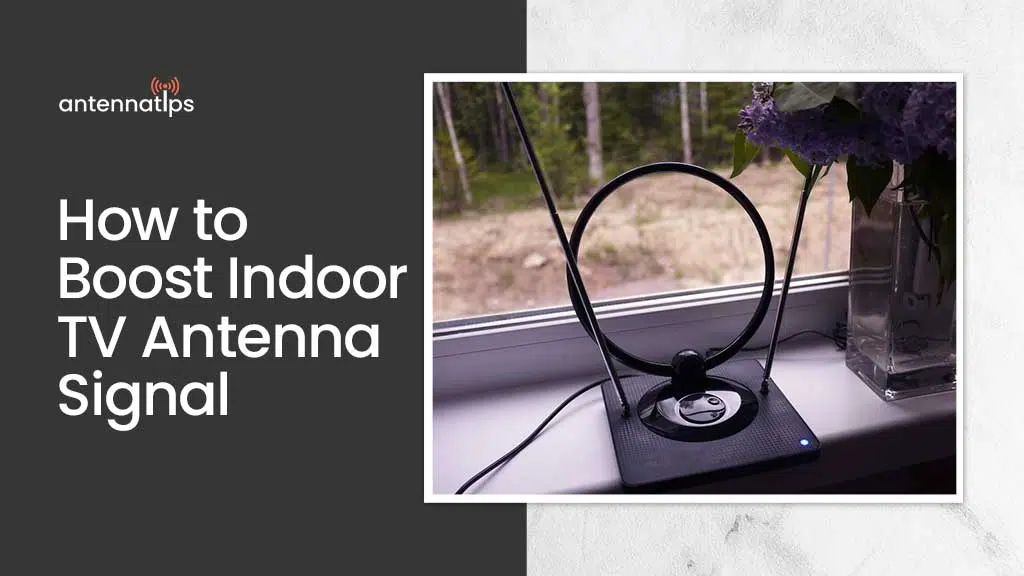
Setting up an antenna is one thing. But making sure that your TV antenna has a good reception is another. Even if you have purchased the best TV antenna, you can still encounter weak signals. And we’re here to help show you how to boost indoor TV antenna signals.
So before cutting the cord and your monthly cable subs, read our simple guide. This can make a whole lot of difference to your TV viewing.
And although this article is going to concentrate on improving signals for indoor TV antennas, you can also do the same thing for your outdoor antennas.
What Is a Noise Margin?
And why do we have to know? Because the noise margin can affect your antenna’s ability to pull in channels. Nose margins are measured in decibels. And it refers to how much signal noise your TV can take before it won’t be able to receive signals anymore.
Where do the noises come from? The signal can pick up negative noise en route to your location. Obstructions such as trees and hills can increase the negative noise. And if the total noise margin is more than 0, your TV can receive that signal.
Take note that even cables and amplifiers can also incur a negative noise margin, what we need are positive ones.
That’s why it’s important to know the location of the channels. Tools such as tvfool.com will show which channels have a positive noise margin from your location. This will help you properly gauge where to direct the front of your antenna to.
How to Make a TV Antenna Stronger
Getting a good signal from a free TV broadcast is challenging if your TV signal is weak. Here are a few factors that you need to consider to make your TV antenna signal stronger.
1. Keep your TV away from any electronic devices
Electronic devices such as your phones can cause signal interference. So when placed near the TV, it can disrupt your antenna’s ability to receive clear signals. So keep your gaming systems, computers, and sound system away from your antenna and TV.
Alternatingly, you may also unplug all your TV connections. Then retest the signs if there is any improvement in the reception.
2. Mount your antenna higher
It’s easy to mount an outdoor antenna. You simply place it on top of your roof. But how about indoor antennas?
You can mount your indoor TV antenna in your attic or near the ceiling or a window. You can also try placing the antenna at these three different locations to see which one can give you the best reception.
3. Direct your antenna to the line of sight of broadcast towers
If you’re using a directional antenna, direct the front of the antenna to where the transmission towers are. So you have to do a little research. Locate where the broadcast towers are located.
You may also visit tvfool.com to see a list of broadcast towers and their exact location.
4. Use an amplifier
But if you are located far from broadcast towers, directing it to the line of sight won’t suffice. You have to use an amplifier to help your antenna pull in channels.
Also, note that using an amplifier if you’re near a broadcast tower is counterproductive. It can make signals stronger than what the TV can handle. So it can result in distorted noises.
5. Do a channel rescan regularly
Channels can move through different frequencies. So it might pick up new channels in your location from time to time. That’s why it is wise to do a channel rescan regularly. You’ll be surprised at what it can pick up.
6. Use a digital tuner
A digital tuner or a converter box such as Roku can help your TV pull in more channels. It’s also an inexpensive way to enjoy digital channels.
7. Change the orientation of your antenna
Instead of hanging your antenna vertically to a wall or closing the window, try experimenting with a different orientation. It may sound odd but placing the antenna horizontally flat on the floor might help. And this will most likely work with a mohu leaf antenna.
8. Put it in a skylight
This is a great indoor solution to mounting your antenna higher. If you have one, take advantage of it. Your antenna might just be able to pull in more channels.
9. Use a better coaxial cable
Most free coaxial cables are flimsy and are of low quality. So if you’re having a weak tv signal, try changing to a high-quality cable.
Coaxial cables help enhance the ability of your antenna to receive clear frequencies. RG6 cables, namely are better conductors and can receive higher frequencies. So it might just do the trick.
10. Unplug your Amazon fire stick
Amazon fire sticks are also considered electronic interferences. There are several things that you can do. One, unplug the stick and use an HDMI extender cable instead. So that it would be located a bit far from the antenna and youth TV. Or two, you can wrap the fire stick in foil. This seems to work for some people.
11. Add some metal item over a metal antenna
If you’re using a metal antenna, putting another metal object beside it can kelp boost signals? But don’t do this if your antenna is made of plastic or other materials.
12. Experiment on your reflectors
Homemade reflectors such as pie tins and metal tins can do the trick. This is helpful in areas where your signal only comes from one direction. Alternatingly, if you’re using a reflector, try removing it. Then see if it can help boost the signal without one.
13. Ground a part of your shield
Grounding a part of your cable to the ground might help. Electronic noise can get coiled up into your antenna’s shield. The noise might call down if a part of the cable gets in touch with the soil.
14. DIY antenna
If you’re into a bit of DIY and experimenting, why not make your own antenna. And by this, we mean a big homemade antenna made of copper wires. You can transform the entire attic ceiling into a big antenna. Some homeowners have had success with this.
How to Make DIY HDTV Antenna
- Gather all the tools and materials that you need. You’ll be needing the following
- Plastic hanger
- 2 soda cans with flip-top opening
- Cutter
- Masking Tape
- A short cable with a TV antenna connector
- Attach the tin cans to the hanger using the masking tape. It should be taped horizontally to the bottom part of the hanger.
- Cut the wire until copper parts are exposed. Then attached the copper wire to the flip top part of the cans. Connect one pc of copper wire to one can and the rest to the other soda can
- Take note that the flip top part of each can should be facing one another.
- Connect the antenna connector to the TV and hang the plastic hanger to the bottom part of the TV.
- Take note that this will only work if you have available HDTV channels in your area.

Why Are My Antenna Receptions Weak
Ever wonder why you’re getting weak signals despite buying the best TV antenna for indoors? Here are several reasons.
1. Electronic interference
Apart from your phones and gaming systems. There are other appliances in your home that can cause signal interference. And these are LED, fluorescent lights, or pretty much any appliance with an electric motor.
2. Multipath interference
It means that your signal may bounce around due to flying planes, trees, hills, and thick foliage.
3. Cell phone towers interferences
Since there are a lot of smartphones located everywhere, cell sites are almost everywhere too. And this can cause signal interference with your TV.
4. Streaming devices
Streaming devices such as Amazon fire stick and Chrome cast can cause interference. If they are connected directly to the HDMI port of your TV, it can be a problem.
5. Poorly shielded cables
The shield in coaxial cables helps bypass electronic interference. So if your cable is not properly shielded, it can cause a weak signal.
FAQs
Why is my RCA indoor antenna not working?
Why isn’t my antenna picking up signals all of a sudden?
Does aluminum foil help boost TV signal?
Conclusion
How to boost a TV antenna signal? There are simple and easy to help your antenna boost its signal. There are even Diy and homemade solutions that you never knew might work. You just need to experiment a bit.